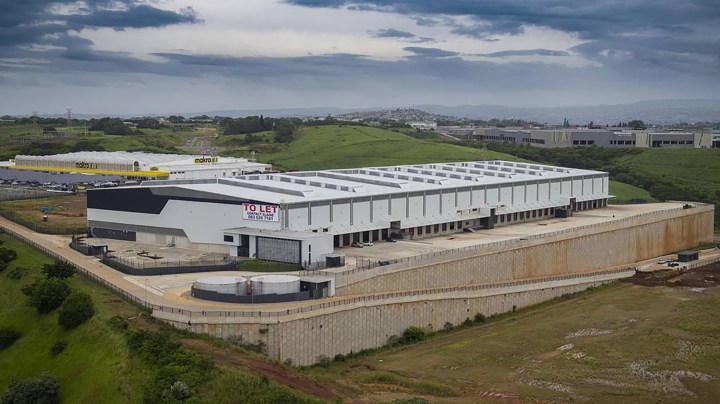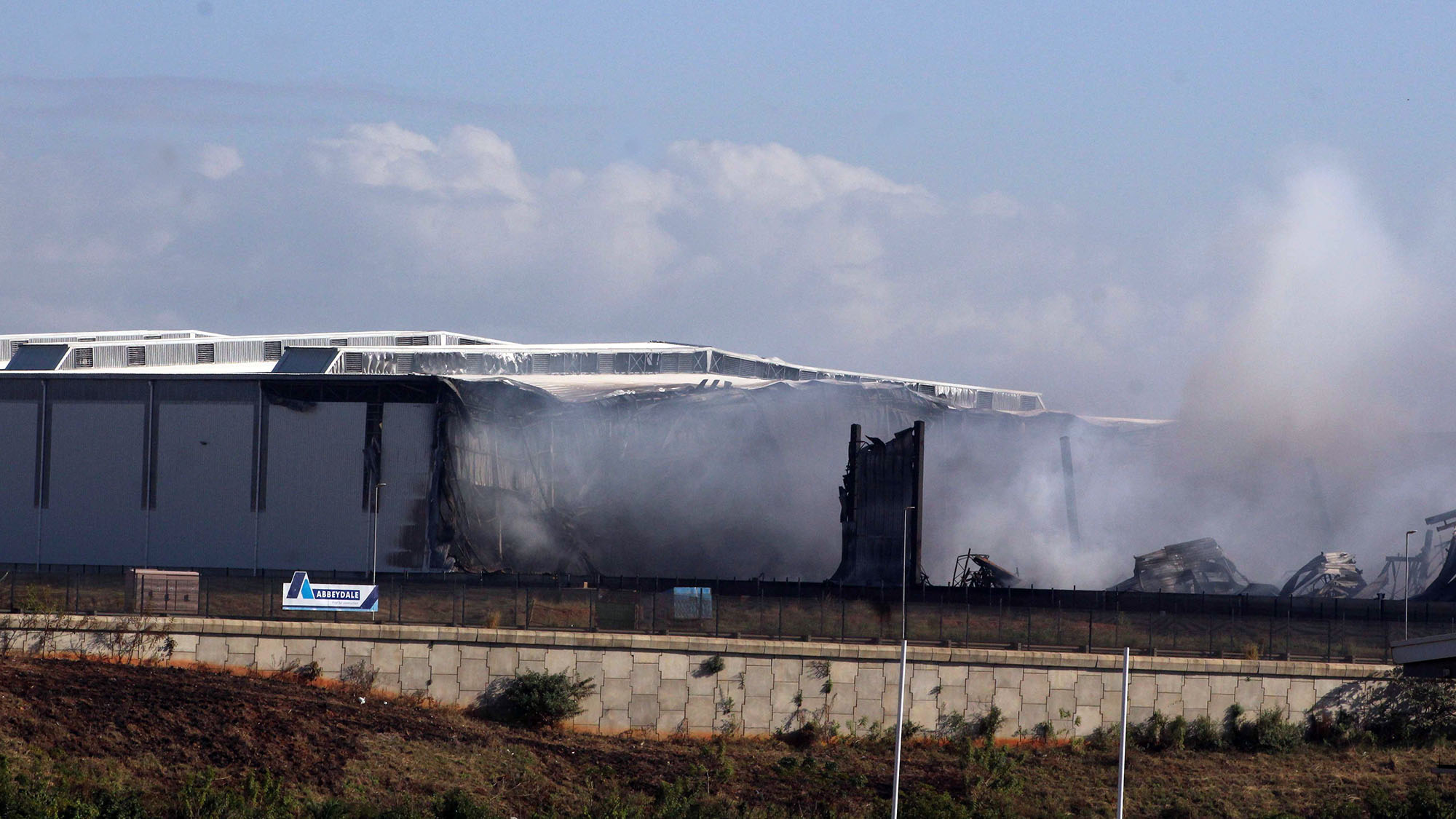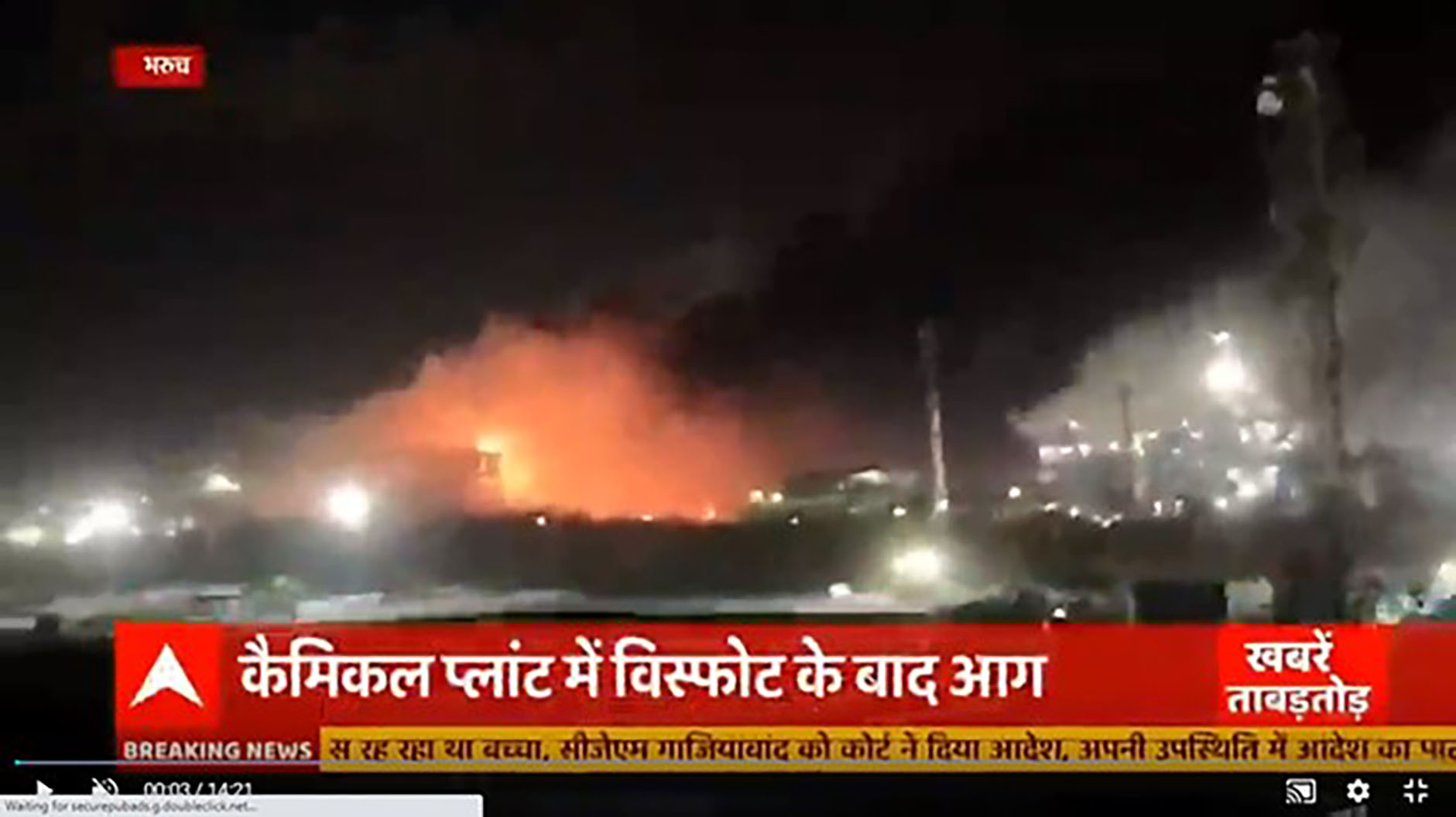OUR BURNING PLANET
United Phosphorus Limited: Toxic warehouse in Durban part of special ‘fast-track’ state investment scheme; firm fined millions in India

The Indian-owned toxic chemical plant that blew up and polluted air, rivers and sea around Durban was part of a special ‘fast-track’ economic investment scheme by national government, with no specific environmental or hazardous substance approvals or any local government scrutiny.
Back in India, the company has just been fined nearly R2-million after one of the company’s pesticide manufacturing plants was shut down by authorities following an explosion five months ago, which killed three workers and injured many more. The Supreme Court in New Delhi has also ordered it to pay another R20-million for operating a major plant for decades without valid environmental authorisation – while company lawyers have hounded journalists for decades for publishing ‘defamatory’ stories about its legacy of environmental pollution.
***
Containing up to 1,600 different chemical products – many of them highly toxic – the Indian-owned United Phosphorus Limited (UPL) pesticide and agro-chemicals warehouse which blew up in Durban on 13 July was part of a special national government investment scheme in which normal regulatory approvals are “fast-tracked” to attract investors.
Officials have revealed that no “specific” environmental impact study was conducted on chemical storage and potential pollution for the new UPL facility in Durban, as only one “integrated environmental assessment” was done for the entire Greater Cornubia mixed-use development project – a project that was designated and gazetted as a special human settlements Strategic Integrated Project (SIP number 24) by the Presidential Infrastructure Coordinating Commission.
Speaking at a joint sitting of Parliament in October, to outline details of the government’s Economic Reconstruction and Recovery Plan, President Cyril Ramaphosa said there would be a massive rollout of infrastructure that would “completely transform the landscape of our cities, towns and rural areas”.
This would include 276 catalytic projects with an investment value of R2.3-trillion, while a list of 50 strategic integrated projects and 12 special projects had also been gazetted.
“These catalytic projects have been prioritised for immediate implementation with all regulatory processes fast-tracked – enabling over R340-billion in new investment,” he said
Greater Cornubia – which included a mix of high-density houses, shopping centres and light industrial areas – was one of these projects, where mandatory environmental scrutiny appears to have fallen by the wayside, or conveniently circumscribed.
And now, as the dust, debris and toxic chemical smoke clears around the shattered UPL warehouse, government officials and the company appear to be scrambling to pick up the pieces after large parts of Durban were engulfed by clouds of highly toxic chemical fumes and dust for more than 10 days, while a local river system and several beaches were closed after thousands of fish were poisoned by contaminated water poured out of the site – seemingly uncontrolled by any pollution prevention ditches or dams on the site.
Our Burning Planet has requested a copy of the integrated environmental impact assessment (EIA) and authorisation from government and the company, but has not received any of this documentation yet.

The United Phosphorus Limited pesticides warehouse billowed toxic smoke and dust over larger parts of Durban. (Photo: Tony Carnie)
At a media briefing in Durban late on 23 July, a team of government officials also confirmed that they were not aware of any application for a Major Hazardous Installation permit being lodged by UPL or the landowners. Nor was there any record of a Scheduled Trade Permit being granted for the facility in terms of the City of Ethekwini by-laws which regulate air emissions and pollution from potentially hazardous plants.
On whether a site-specific EIA was done, the officials said the UPL facility had been approved as part of an integrated approval for Greater Cornubia.
“There was no specific authorisation for UPL. It was authorised to the extent of operating within the auspices of the (integrated) authorisation,” according to Sabelo Ngcobo, chief director of the KZN provincial Department of Economic Development, Tourism and Environmental Affairs (Dedtea).
Ngcobo and fellow Dedtea environment chief director Siphumelele Nowele revealed that the department was still waiting for a full list of the 1,600 chemicals housed at the now shattered UPL facility, in apparent contradiction of assurances by the company that a list of chemicals had been handed to the authorities last week.
“The company did provide a list, but it’s not sufficient. It was not all the products. We need the entire list,” said Dedtea official Dr Zakhele Dlamini.
Bruce Dale, senior manager for Pollution Control, Air Quality Monitoring & Atmospheric Emission Licensing in the Ethekwini Municipality said UPL was “not in possession of a Scheduled Trade Permit” although its chemical activities potentially triggered certain by-law permissions.
Dale acknowledged that companies handling hazardous substances were required to make declarations in terms of the Major Hazard Installations Regulations of the Occupational Health and Safety Act of 1993.
“Unfortunately, it does not appear that there was any Major Hazard Installation applied for”, he said, although the Act specifies that every employer is required to notify the Chief Inspector of Labour and relevant local government officials about the erection or expansion of any major hazard installation “prior to completion thereof”.
Nowele confirmed that the fire and toxic air emissions had continued for almost 10 days, from around 2am on 13 July until it was finally extinguished at 5pm on 22 July.
She said the toxic chemicals that had spilled into rivers, soil and the ocean were regarded as highly hazardous and contaminated waste could not therefore be dumped into ordinary landfill sites.
On whether government was considering criminal prosecution against UPL, the officials said a pre-directive has been issued to the company in terms of Section 28 of the National Environmental Management Act.
Durban chemical fireball puts community health risks and hazard planning in the spotlight
A pre-directive is a preliminary administrative action under this Act, which also provides for further directives, final directives or possible prosecution.
Nowele said she fully agreed that government should act stringently if any parties failed to disclose information.
“However, some of the information will come through the administrative process we have put in place and we don’t want to pre-empt the answers from UPL … All the steps have to be followed. We can’t jump steps provided for in the law.”
She was also asked whether the toxic warehouse facility had incorporated any bunding or pollution-control dams. Bunds are contained ditches, similar to empty castle moats, designed to contain spillages and leaks of petrol, oil and other hazardous liquids in case of spillage, accidents or fires.
“That information is critical and forms part of what we are asking … but we can’t pre-empt the responses from the facility,” she said. DM
Mumbai-based UPL pesticide giant ordered to cough up costs back home
Meanwhile, research by Our Burning Planet has revealed that the Mumbai-based UPL pesticide giant has come in for severe criticism back in India for pollution, accidents, worker deaths and violations of its mother country’s environmental laws.
In August 2018 “defamation” charges against three Indian journalists were quashed by Mumbai metropolitan magistrate KG Paldewar, who found that they acted with due care and for the public good in reporting about UPL dumping untreated toxic chemical waste in the Daman Ganga river in the Gujarat state.
The case against the journalists had dragged on for more than 20 years and was widely seen as a SLAPP suit (Strategic Litigation Against Public Participation) designed to intimidate or silence criticism of the company.

Environmental editor Bittu Sahgal was among the journalists UPL tried to sue for criminal ‘defamation’. (Image: Fress Press World)
Photo-journalist Shailendra Yashwant, Newstime chief editor Ramoji Rao and Sanctuary Features editor Bittu Sahgal were charged with criminal defamation for allegedly publishing false and defamatory information intended to harm the company and tarnish the reputation of its directors.
According to a feature report in India’s Firstpost.com media platform, Yashwant published an article in the mid-1990s which described the high levels of pollution and poor handling of untreated waste in chemical industrial units in the Vapi area of Gujarat and how toxic waste was dumped into the Daman Ganga river.
“At that time United Phosphorus had imported a second-hand chloralkali plant from Norway, and Greenpeace had done a report on this which was referred to in the article. The plant which made toxic chemicals, was closed in Norway and it was ‘dumped’ into India, Greenpeace had said.”
“It was only in 2011 and 2013 that Vapi was notified as a critically polluted area by the Ministry of Environment and Forests and is a toxic hotspot with little regulation. In the course of the trial, the court noted that there was poor law enforcement of environmental rules,” according to the Firstpost.com report.
“In the current atmosphere where media freedom is sought to be curtailed, the order comes as a boost especially for environmental causes, since it also criticises the bypassing of the law, even as pollution is not controlled by government bodies meant for that purpose.”
Sahgal told the platform: “This is not a victory for three journalists, it is a victory for democracy and freedom of speech. It is also a clarion call to policy makers to recognise that the implementation of environmental laws amounts to the protection of the life of every Indian citizen, as defined by the sacred Constitution of India.”
The case also highlighted alleged negligence by local regulators and industry bodies such as the Gujarat Pollution Control Board and Gujarat Industrial Development Corporation in halting pollution over a prolonged period.
Last year, the UPL was also ordered to pay a whopping ₹ 10 crores (nearly R20-million) in compensation and fines after the Supreme Court of India issued a landmark ruling against several chemical industries operating in the industrial area of Ankleshwar area of Gujarat state.
This was after the company applied for after-the-fact environmental authorisation of a major chemical plant that had been operating since 1993 without a valid Environmental Clearance (EC).
Justice Dhananjaya Chandrachud found that in the absence of a certificate, there would be no conditions that would safeguard the environment.
“Moreover, if the EC was to be ultimately refused, irreparable harm would have been caused to the environment,” he ruled, overturning an Indian government administrative circular from 2002, which would have allowed ex post facto clearances to UPL and other polluting industries.
Though he also halted an order by the country’s National Green Tribunal ordering closure of the plant, Chandrachud imposed a much stiffer fine on the company and reiterated the need for proper environmental assessment of polluter industries – before they began any operations.
“An EC can be issued only after various stages of the decision-making process have been completed. Requirements such as conducting a public hearing, screening, scoping and appraisal are components of the decision-making process which ensure that the likely impacts of the industrial activity or the expansion of an existing industrial activity are considered in the decision-making calculus. Allowing for an ex post facto clearance would essentially condone the operation of industrial activities without the grant of an EC.”
However, UPL had made substantial investments after being granted after-the-fact clearance.
“In this backdrop, this Court must take a balanced approach which holds the industries to account for having operated without environmental clearances in the past without ordering a closure of operations … At the same time, the Court cannot be oblivious to the environmental degradation caused by all three industries units that operated without valid ECs. The three industries have evaded the legally binding regime of obtaining ECs. They cannot escape the liability incurred on account of such noncompliance. Penalties must be imposed for the disobedience with a binding legal regime.”
Ordering UPL to cough up ₹ 10 crores, the judge said this compensation should be used for the purpose of restitution and restoration of the environment.
Then, barely five months ago, a massive explosion rocked UPL’s chemical plant in Jhagadia, killing three workers and injuring at least 26 others.
According to The Times of India and other publications, this factory has now been issued with a “total closure order” and ordered to pay further compensation of ₹ 1 crore (nearly R2-million) for the resulting environmental damage.
According to media reports the Gujarat Pollution Control Board found that this accident was due to “lapses in safety precautions” and also led to large volumes of contaminated water flowing out of the complex during subsequent fire-fighting operations – just as happened in Durban, although the direct cause of the Cornubia disaster was due to arson.
Our Burning Planet asked UPL to comment or respond to several issues regarding environmental planning approvals, hazard installations and the recent legal action in India but said it was currently focused on several other issues.
UPL RESPONDS:
“We apologise that our client is unable to provide you with a detailed response at this time. Their immediate efforts after this devastating fire caused as a result of the recent civil unrest in KZN have been directed at extinguishing the fire, containing the escape of product from the facility property, and dealing with the many tasks associated with those activities. It is a mammoth exercise involving numerous authorities, consultants and contractors, all co-ordinated by their small team.
“As they deal with this, they are endeavouring to communicate essential information to the public, authorities and others, and are logging all other enquiries and requests for information. We are in the process of setting up a communication protocol, so that all items can be dealt with and queries answered in a coordinated manner.
“Please would you take note of all of their public notifications and updates, which can be found on www.upl-ltd.com/za. Further notices will be published as new information comes to hand, or as the authorities direct.” DM/OBP























 Become an Insider
Become an Insider
The NPA and Department of Environment need to investigate who allowed UPL to set up in South Africa, knowing the they would import toxic chemicals. The company need to have a civil case opened against them. Remember Beirut, this was also political corruption that blew the city apart. This will happen in Durban in the future if UPL are not prosecuted.
It is a relief that the fire did not result in a Bhopal-like disaster when between 3 000 (immediate) and eventually 16 000 people succumbed due to a gas explosion at a similar plant in 1984.
The likelihood that this chemical plant in Durban was established seems to be the result of the array of tools available in the South African Pandora’s Box: BRICS preferences, EIA short cuts by unethical practitioners, poor decision-making by incompetent cadres due to government’s cadre employment strategy, and more.
This is the result when the safety protocols that the chemical industry has to abide by are completely ignored. Unless criminal prosecutions are brought to bear against the individuals responsible for this then this is bound to be repeated.
So, what you are indirectly saying and I agree 100%, is that a similar situation will be repeated.
Greed and poor governance are major contributing factors to the poisoning of our planet. While accidents can happen anywhere, this kind of overt abuse of environmental safety regulations and oversight proliferates in corrupt, poorly-managed countries like our own. Ignorance is easily bought in countries where ethics and the rule of law are overwhelmed by that slobbering greed.
Who is the letting agent? Name and contact number on the building!.